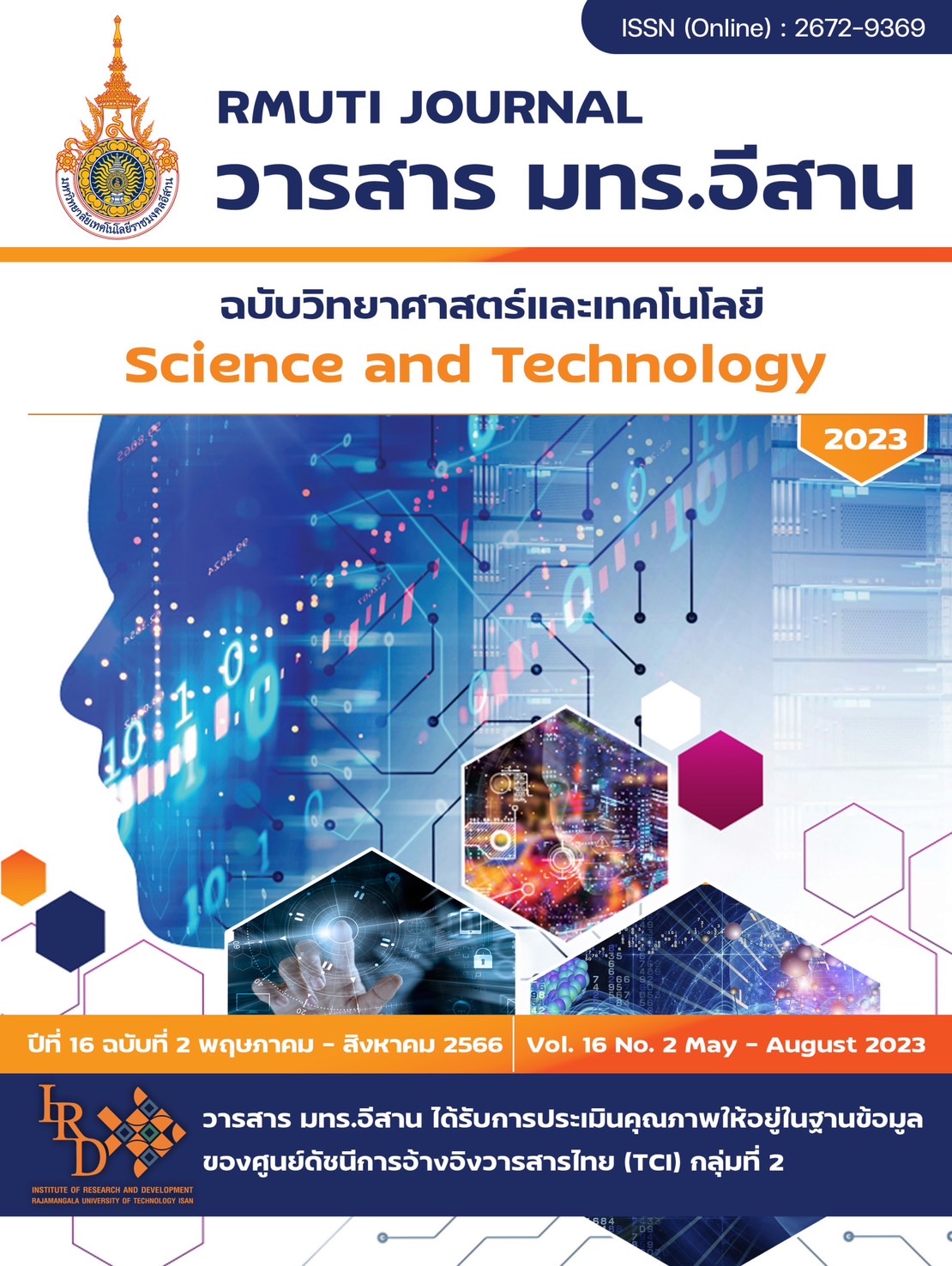Developing Coconut Milk Ice Cream Using Stabilizers from Okra Mucilage Powder
Main Article Content
Abstract
This research study aimed to select a suitable recipe for making coconut milk ice cream using okra mucilage powder as a stabilizer and determine the optimal amount of okra mucilage powder for the recipe. A completely randomized block (RCBD) experiment was planned for sensory analyses and a completely randomized experiment (CRD) was planned for physical, chemical and microbial analyses. The results showed that appropriate amount of okra mucilage powder was 5 grams (0.50 %), which received favorable sensory preference scores for color (7.90±1.21), taste (7.40±0.86), and overall preference (7.46±1.11) on a 9-Point Hedonic Scale. However, no significant differences were observed in scores for appearance and smell. By substituting okra mucilage powder for guar gum, the viscosity and overrun percentage of the ice cream mixture were reduced, resulting in an appropriate texture and slower melting. The physical, chemical, and biological analyses revealed L*, a*, and b* values of 45.68, 0.85, and 8.22, respectively, a pH value of 6.80, water-soluble solids content of 25.1 brix, overrun percentage of 21.83, and viscosity of 3,174 centipoise (cp). The chemical analysis showed moisture, fat, protein, fiber, and carbohydrate percentages of 71.04, 1.67, 4.83, 0.45, 1.57, and 20.44, respectively, with a total energy of 116.11 kilocalories per 100 grams. This study highlights the potential use of okra mucilage powder as a stabilizer in ice cream production, providing added value to okras and exploring new applications.
Article Details

This work is licensed under a Creative Commons Attribution-NonCommercial-NoDerivatives 4.0 International License.
References
Jungyampin, T. (2022). Okra, Nutrients and Precautions in Consumption. Access (5 January 2023). Available (https://hellokhunmor.com)
Manpian, W. (2006). Modification of Polysaccharides from Okra with Ammonium High Droxide and Ethylamine. Master of Science Thesis. Bangkok: Kasetsart University
Noiduang, P. and Phochai, P. (2010). Utilization of Mucilage from Okra (Abelmoschus esculentus L. Moench.) as a Stabilizer in Yanang (Tiliacora triandra Diels.) Leave Ice Cream. Journal of Food Technology Siam University. Vol. 6, No. 1, pp. 35-43
Pisanwatcharin, A. and Sajjaanantakul, T. (2012). Utilization of Polysaccharides From Okra as a Stabilizer in Acidic Milk Beverages. In Academic Conference National Conference for Sustainable Research Development, 25-26 December 2012. Bangkok: Institute for Intellectual Strategies and Research, Srinakharinwirot University. pp. 1335-1343
Budsadee, K., Praprutmetha, P., and Petchpankan, S. (2006). Production of Mucilage Powder from Okras. Nakhon Pathom: Office of Academic Resources and Information Technology
Khamsao, P. (2012). Study on Optimum Conditions for Extraction of Okra Mucus. (Special plans). Pathumthani: Rajamangala University of Technology Thanyaburi
AOAC. (2000). Official Method of Analysis. 17th ed. Washington, D.C.: The Association of Official Analytical Chemists
BAM. (2002). Bacteriological Analytical Manual. 8th ed. Gaithersburg: Association of Official Analytical Chemists
Rattanapanont, N. (2002). Food Chemistry. Bangkok: O.S. Printing House
Noiduang, P. and Chanpong, V. (2005). Utilization of Mucilage from Hairy Basil Seed (Ocimum canum Sims)as a Stabilizer in Banana Ice Cream. Journal of Food Technology Siam University. Vol. 2, No. 1, pp. 18-27
Phuenpipob, C. (2013). Developing Stability of Coconut Milk Ice-cream by Banana Flour. In RMUTP Research Journal Special Issue, the 5th Rajamangala University of Technology National Conference. pp. 19-25
Thiraphatphonchai, Y. (2013). Effects of pH and Preservation in Aluminum foil Packets on Properties of Okra Mucus. Master of Home Economics Thesis, Pathumthani: Rajamangala University of Technology Thanyaburi
Thai Web Pharmacist. (2022). Amino Acid and 20 Types of Research Benefits. Access (18 June 2023). Available (https://medthai.com/amino-acid/Medthai)
Ministry of Public Health. (2001). Announcement of the Ministry of Public Health. No. 222. Ice cream. Vol. 114, pp. 70
Hongwiwat. Nidda (2013). Good Food to Eat. Bangkok: Sundae Publishing House


